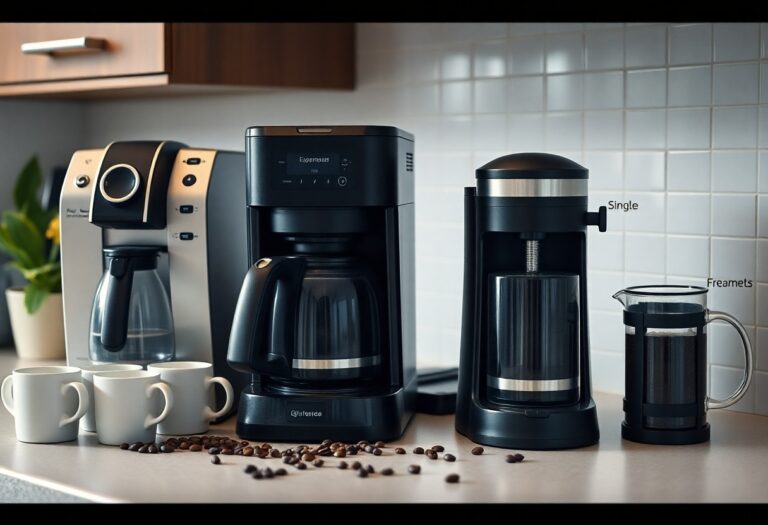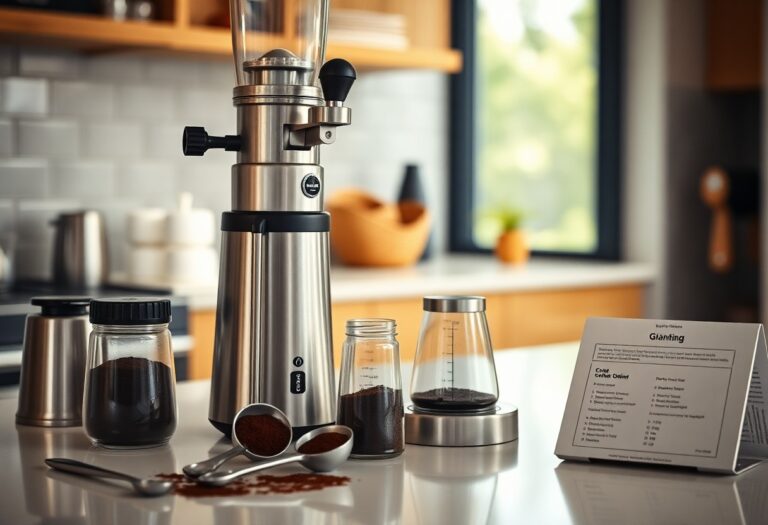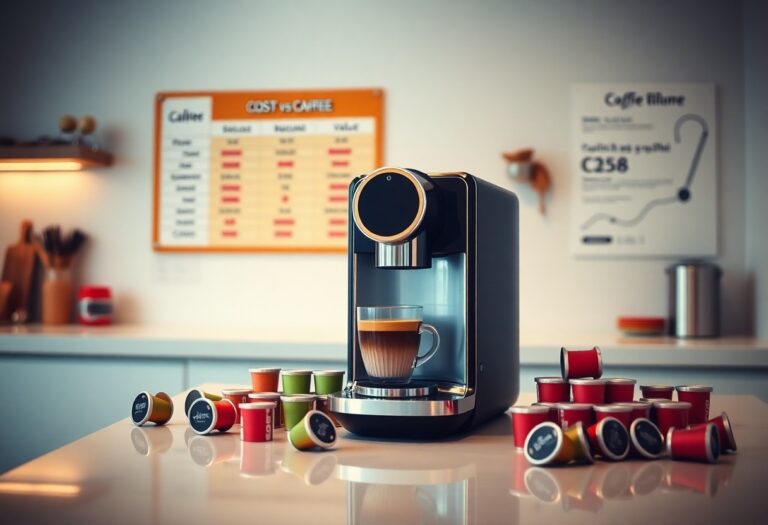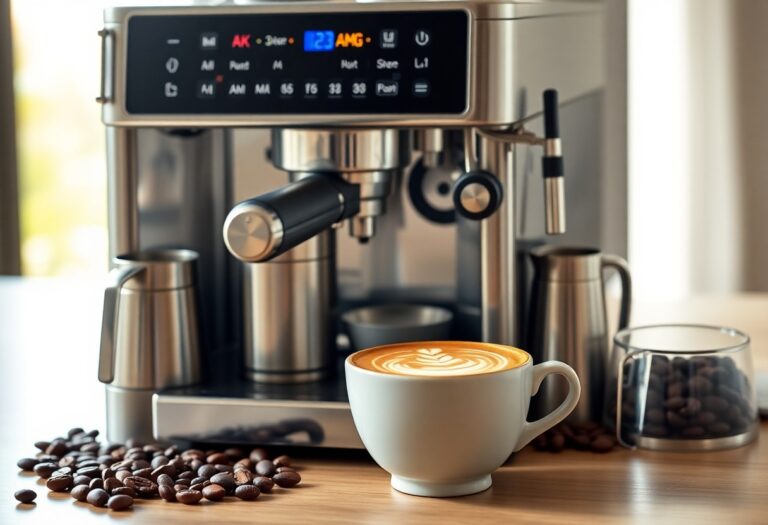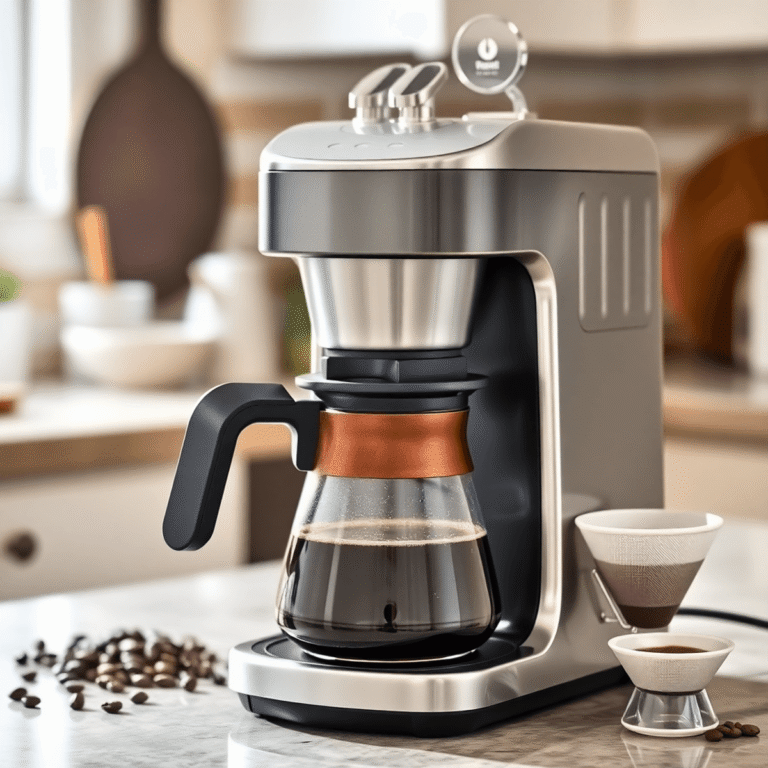How to Use a Coffee Machine: Basic Operation Instructions
Knowing how to use a coffee machine is essential for anyone who enjoys a fresh cup of coffee at home. Mastering the coffee machine basics not only saves time but also ensures you get the best flavor from your brew every morning. Many households rely on drip-style coffee machines, which are popular for their simplicity and consistent results.
Drip coffee makers work by slowly dripping hot water over ground coffee, extracting flavor while allowing you to prepare multiple cups at once. These machines usually feature straightforward controls and familiar components, making them ideal for beginners and daily users alike.
This guide focuses on basic operation instructions for common household drip-style coffee machines. It breaks down the process into clear, manageable steps so you can confidently set up, brew, and maintain your coffee maker. Whether you’re new to brewing or want to refine your technique, this article provides practical advice to help you enjoy great coffee with ease.
Learning how to use a coffee machine properly transforms your morning routine and elevates your home brewing experience.
As part of maintaining your coffee machine, it’s important to understand how to clean it properly. For instance, if you own a Keurig, following this ultimate maintenance guide can greatly improve its lifespan and performance.
In addition, descaling your Keurig is crucial for optimal performance. You can find a detailed step-by-step guide on how to do this effectively.
If you’re using a Krups coffee machine, this maintenance guide offers valuable insights into proper cleaning techniques.
Understanding Your Coffee Machine
One of the most common types of coffee machines found in households is the drip-style machine. Here’s what you need to know about your coffee machine:
1. Types of Coffee Machines
While there are various types of coffee makers available, the drip-style machine is a popular choice due to its convenience and ease of use for daily brewing needs. However, it’s worth noting that espresso machines also have their own unique advantages and brewing methods. You can explore more about using an espresso machine in this brewing guide.
2. Drip Coffee Maker Features
Drip-style coffee machines operate by dripping hot water over ground coffee beans, extracting the flavor as it passes through a filter and into a pot below. This method produces a standard cup of coffee suitable for many tastes. If you’re interested in mastering the art of using a filter coffee machine, check out these brewing instructions.
3. Coffee Machine Parts
Understanding the key components of your drip-style coffee machine is essential. These typically include:
- Filter basket: Where you place the grounds
- Water reservoir: Holds the water for brewing
- Warming plate: Keeps your coffee hot after brewing
4. Importance of Reading User Manual
Each coffee machine model may have specific features or operating instructions that are crucial to know for optimal performance. Taking the time to read the user manual can provide valuable insights into how to make the most out of your particular machine.
5. Maintenance Tips
To ensure your coffee maker continues to function optimally, regular maintenance is necessary. This includes cleaning and descaling your machine, which can significantly improve its performance and longevity. For detailed guidance on how to clean and descale a coffee maker, refer to this helpful resource.
By familiarizing yourself with these aspects of your coffee machine, you can brew your favorite cup of joe with confidence and ease.
Preparing to Brew: Essential Steps
When preparing your coffee machine for brewing, selecting the right coffee filter is crucial. Most drip-style machines support two main types:
- Paper filters: Disposable and convenient, these filters trap most oils and fine particles, resulting in a cleaner cup. They require replacement after each use.
- Mesh filters: Reusable and typically made of metal or plastic mesh, these allow more oils and micro-particles through, offering a richer flavor but needing thorough cleaning after each brew.
Check your machine’s manual to confirm which filter type it supports or if it includes a proprietary filter.
Measuring coffee grounds accurately ensures balanced extraction and optimal taste. The standard guideline is:
- 2 tablespoons of coffee grounds per 6 ounces of water.
Adjust this ratio slightly based on personal strength preference or bean type. Use a kitchen scale or standard measuring spoon for consistency.
Freshness directly impacts flavor quality. Coffee grounds start losing aroma and taste soon after grinding. For best results:
- Use fresh coffee beans.
- Grind them just before brewing when possible.
- Store beans in airtight containers away from light, heat, and moisture to preserve freshness as suggested in this guide on storing coffee beans.
Getting these essentials right sets the foundation for a satisfying brew every time. To further enhance your brewing experience, consider exploring some useful platforms and tools that can help you brew the perfect cup of coffee.
Adding Water Properly and Starting the Brewing Process
Proper water handling is essential when filling the water reservoir of your coffee machine. Always use cold water for brewing to ensure optimal flavor extraction and avoid damaging internal components. Pour the water into the designated compartment—this is usually a separate tank or reservoir—and never directly into the filter basket where the coffee grounds sit.
Most drip-style machines feature measurement lines on either the pot or inside the reservoir. These markings help you add an accurate amount of water based on how many cups of coffee you want to brew. For example, if you measured two tablespoons of coffee grounds per 6 ounces of water in the previous step, match that volume here by filling up to the corresponding line.
Next, place the empty pot securely on the warming plate if your machine has one. This plate keeps brewed coffee warm without burning it. Ensuring the pot sits correctly avoids spills and activates safety mechanisms in some models.
To start brewing, turn on the machine using its power button or switch. Some machines may have timer functions allowing you to schedule brewing for a later time. If yours has this feature, set it according to your preference before initiating brewing.
This sequence—adding cold water properly, placing the pot, then starting your coffee maker—is a crucial part of How to Use a Coffee Machine: Basic Operation Instructions. Mastering it ensures smooth operation and consistent coffee quality every time you brew.
Post-Brewing Steps and Maintenance Tips for Your Coffee Machine
After brewing your coffee, it’s essential to take care of your coffee machine for optimal performance and delicious coffee every time. Here are some post-brewing steps and maintenance tips to keep your coffee maker in top condition:
1. Dispose of Used Grounds
For paper filters, remove them after use and discard the used grounds in the trash. If you have a reusable filter, wash it thoroughly with warm, soapy water to remove any residue.
2. Clean Your Coffee Maker
Regular cleaning is crucial to prevent mineral buildup that can affect the taste of your coffee. Follow the manufacturer’s instructions for cleaning your specific model. Use a mixture of water and vinegar to descale the machine periodically. Wipe down the exterior of the machine with a damp cloth regularly to keep it looking clean.
By following these post-brewing steps and maintenance tips, you can ensure that your coffee machine stays in excellent condition and continues to brew delicious coffee with every use.
Enhancing Your Coffee Experience Beyond Basic Brewing Techniques
Grinding fresh beans before brewing unlocks the full potential of coffee’s flavor and aroma. Whole beans retain essential oils and volatile compounds that begin to dissipate once ground. By grinding just before brewing, you capture these elements at their peak.
Key benefits include:
- Richer taste profile due to preserved aromatic oils
- Improved control over grind size, which affects extraction and strength
- Fresher cup since pre-ground coffee can stale quickly when exposed to air
Investing in a quality burr grinder can elevate your daily brew by ensuring consistent particle size, enhancing flavor clarity, and reducing bitterness. This simple step transforms routine coffee making into a more satisfying ritual.
Conclusion
Mastering basic coffee machine use is the first step towards enjoying a perfect cup of coffee at home. By following these simple operation instructions, you can elevate your morning routine and savor every sip. Don’t be afraid to tweak the measurements and methods to suit your preferences. With a little practice and experimentation, you’ll soon discover your ideal brew.
How to Use a Coffee Machine: Basic Operation Instructions empowers you to take control of your coffee-making experience and indulge in the rich flavors of freshly brewed coffee.


